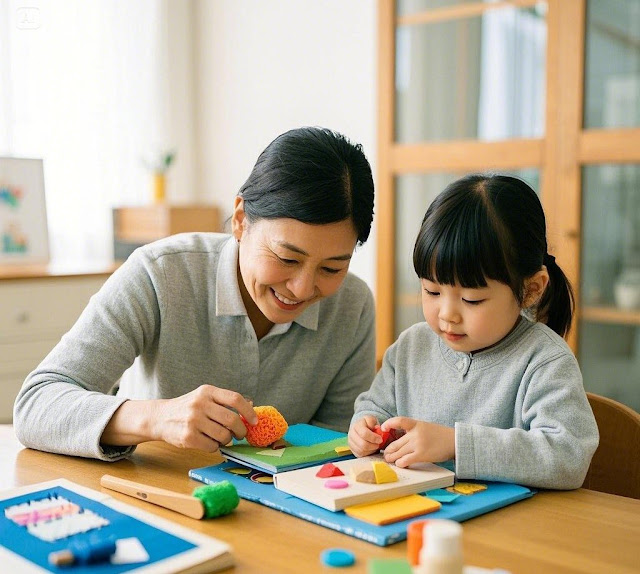How To Integrate Sensory Tools Into Your Homeschool Routine
What are Sensory Tools?
Sensory tools are materials, activities, and equipment that stimulate our senses, including touch, taste, smell, hearing, and sight. These tools have long been used in occupational therapy settings to support children with special needs, but their benefits extend far beyond this. By incorporating sensory tools into your homeschooling routine, you can:
- Enhance focus and concentration
- Improve retention and recall of information
- Encourage creativity and critical thinking
- Develop fine motor skills and hand-eye coordination
- Foster emotional intelligence and self-awareness
Getting Started: Choosing the Right Sensory Tools
With the vast array of sensory tools available, it can be overwhelming to know where to begin. Here are some popular options to consider:
- Playdough: A tactile treat that’s perfect for developing fine motor skills and encouraging creativity. You can make your own using flour, water, and food colouring or purchase pre-made playdough.
- Sensory bins: Fill a container with rice, beans, or sand and hide small toys or other objects for your child to discover. This activity develops fine motor skills and encourages exploration.
- Fidget toys: Small, discreet toys like stress balls, squishy toys, or fiddle spinners can help your child release excess energy and stay focused.
- Essential oils: Incorporate different scents into your homeschooling routine using essential oils. For example, peppermint oil can boost alertness and focus, while lavender oil promotes relaxation.
- Nature: The great outdoors is a sensory paradise! Take your homeschooling outside and engage your child’s senses with nature walks, gardening, or outdoor games.
Incorporating Sensory Tools into Your Homeschooling Routine
Now that you have a better understanding of the sensory tools available, let’s explore ways to seamlessly integrate them into your homeschooling routine:
- Sensory-rich lessons: Incorporate sensory experiences into your lesson plans to make learning more engaging and interactive. For example, when teaching about fractions, use playdough to create pizzas or cakes that can be divided into different portions.
- Break reminders: Use sensory tools as reminders for your child to take breaks and recharge. For example, set a timer and when it goes off, have your child engage in a sensory activity, such as stretching or hopping on one foot.
- Sensory-friendly spaces: Create designated sensory spaces in your home where your child can relax and recharge. This could be a ‘calm corner’ with pillows, blankets, and soothing colours or a ‘sensory room’ filled with fidget toys and sensory bins.
Examples of Sensory-Rich Lessons
Here are some examples of sensory-rich lessons you can incorporate into your homeschooling routine:
- Science: Create a volcano using baking soda and vinegar for a tactile and visual learning experience.
- Math: Use playdough to create shapes and patterns, making math more tangible and fun.
- Language: Use scented markers or coloured pencils to create a sensory experience while writing or drawing.
- History: Create a tactile timeline using different textures like felt, sandpaper, or velvet to represent different eras.
Managing Sensory Overload
While sensory tools can be incredibly beneficial, it’s essential to be mindful of sensory overload. Some children can become overwhelmed by too many sensory experiences, leading to feelings of anxiety or frustration. Here are some tips to help manage sensory overload:
- Start slow: Introduce sensory tools gradually, allowing your child to adjust and become comfortable with new experiences.
- Observe and listen: Pay attention to your child’s cues and body language. If they’re showing signs of sensory overload, it’s essential to provide a calm and safe space for them to recharge.
- Create a sensory-friendly schedule: Establish a daily routine that incorporates sensory activities, allowing your child to anticipate and prepare for sensory experiences.
The Benefits of Sensory Tools in Homeschooling
Incorporating sensory tools into your homeschooling routine can have a profound impact on your child’s learning and development. Here are just a few of the benefits you can expect:
- Improved focus and concentration: By engaging multiple senses, sensory tools can help your child stay focused and attentive.
- Enhanced creativity and critical thinking: Sensory experiences can encourage creative thinking and problem-solving skills.
- Better retention and recall: Sensory experiences can make learning more memorable, leading to improved retention and recall of information.
- Increased confidence and self-esteem: By providing a sense of control and agency, sensory tools can boost your child’s confidence and self-esteem.
Conclusion
Incorporating sensory tools into your homeschooling routine can be a game-changer for your child’s learning and development. By understanding the benefits of sensory tools and knowing how to integrate them into your daily routine, you can create a more engaging, interactive, and effective learning environment. Remember, every child is unique, and it’s essential to tailor your approach to their individual needs and preferences.
References
- National Autistic Society: ‘Sensory issues and autism’
- Occupational Therapy Association: ‘Sensory integration’
- Homeschooling Today: ‘The Power of Sensory Play in Homeschooling’
- Child Development Institute: ‘Sensory Integration Disorder’
- NCSE: ‘Sensory Play in the Early Years’
By embracing the power of sensory tools, you can revolutionise your homeschooling approach and unlock your child’s full learning potential.


Post a Comment for "How To Integrate Sensory Tools Into Your Homeschool Routine"